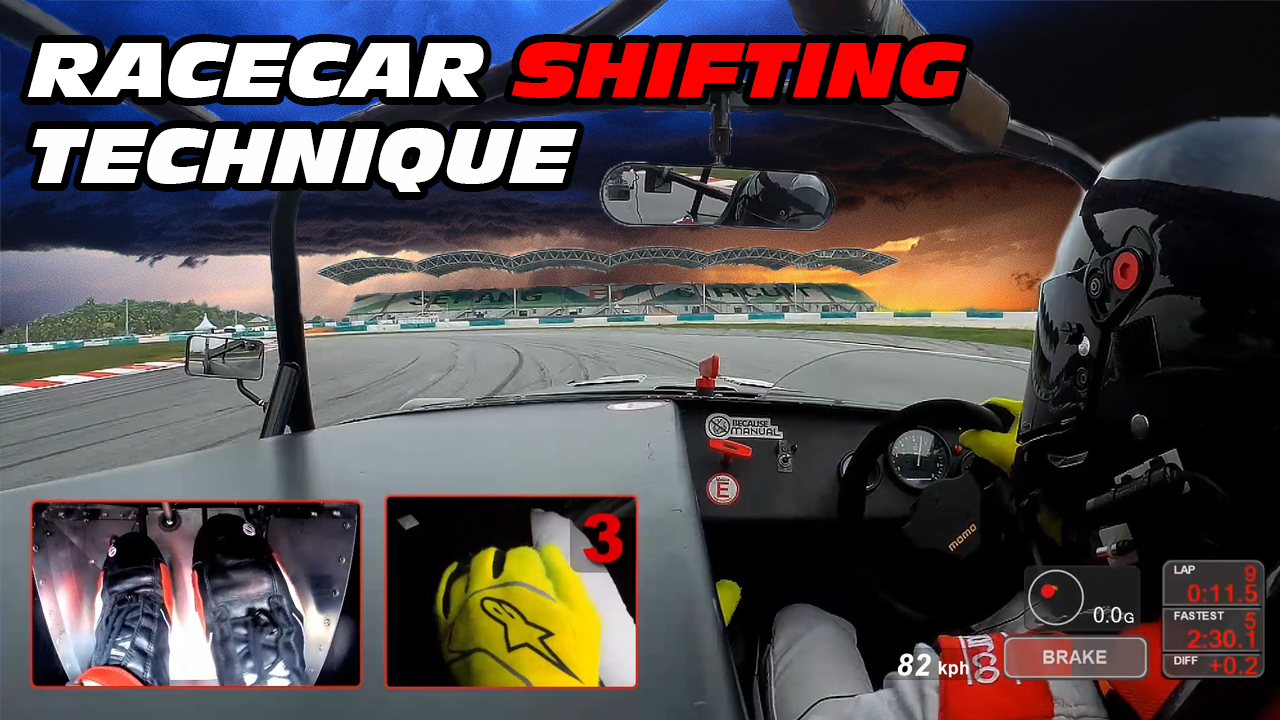I took the opportunity during a race to talk a bit about shifting technique.
The purpose of heel & toe when downshifting is to match the revs of the engine and drivetrain to the speed of the driven wheels. Without heel & toe you rely on the synchromesh to do the work for you – something it simply can’t do proficiently at the speed that we require it to in racing.
Being proficient at rev-matching is super important to being able to drive on the very limit. Without matching the revs on down-shifts the driven wheels (in this case the rear wheels) are liable to momentarily lock-up as the powertrain catches up with the speed of the wheels. That momentary lockup in a rear-wheel drive usually results in oversteer. If you’re rev-match properly you can enter corners at the very limit. If you don’t, you’re forced to drive slightly below the limit to allow for less than ideal shifting technique.
This is most noticeable in corners where you need to downshift while already turning. It is however still important to get done nicely even when braking in a completely straight line, because downshifts without proper rev-matching still affect load transfer and also limit how far rearward you can run the brake bias.
Up-shifts are a lot more straight-forward. Clutch pedal in as you lift off the throttle, change gears, and clutch pedal back up and back on the throttle.

